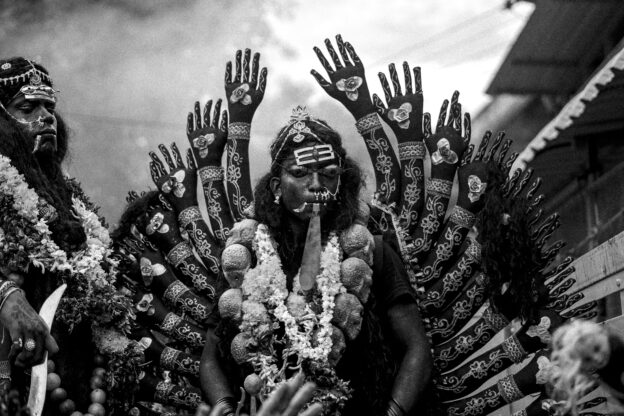When you imagine festivals, especially in India, all you can see is a wall of colours. They’re vibrant, highly energetic and it is really easy to get overwhelmed by all the colours around you, sometimes making it difficult to pick and choose what to shoot. And this is where you can do something while shooting that will change your perspective and give you an opportunity to fine-tune your technical and storytelling prowess—shoot black and white. Yes, colours can sometimes be distracting, so you can choose to shoot them—however, it’s not as easy as changing the colour profile to monochrome and going on about the day. In this article we’ll illustrate why monochrome might be the solution to your stagnant photography style, how it might help you elevate your storytelling skills and more.
The Power of Monochrome
Black and white photography has long been a staple of documentary and fine art photography, allowing the photographer to distill the essence of a moment, unencumbered by the distractions of colour. In the context of Indian festivals, this monochrome aesthetic can be particularly effective in capturing the emotional resonance of these events. By eliminating the riot of colours that often characterises these celebrations, black and white photography can focus the viewer’s attention on the faces, expressions, and body language of the participants, revealing the underlying emotions that drive these festivities.
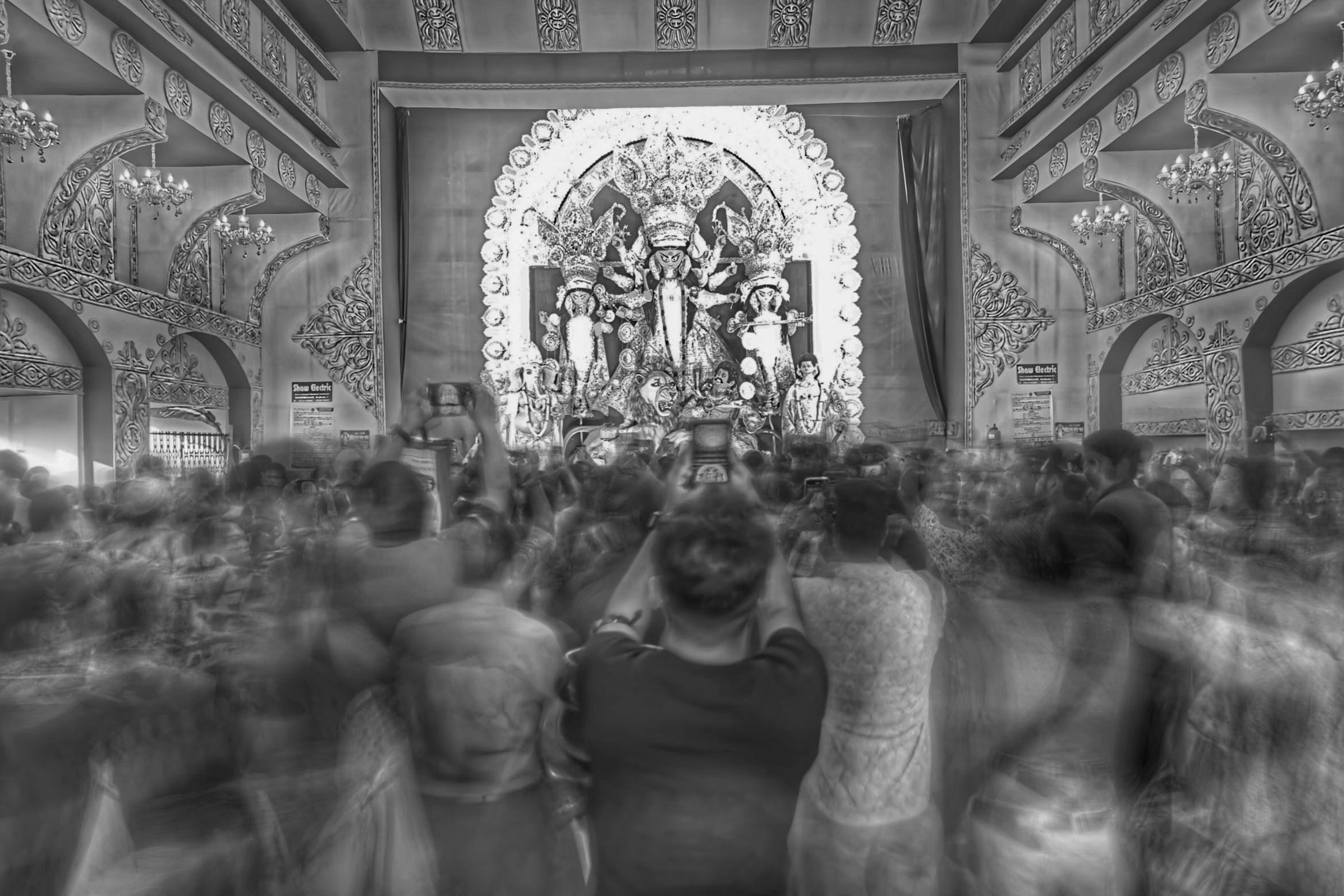
Capturing Emotion in the Moment
Indian festivals are, by their very nature, emotional experiences. Whether it’s the fervour of a Durga Puja pandal, the reverent atmosphere of a Ganesh Chaturthi procession, or the unbridled joy of a Holi celebration, these events are characterised by intense emotions—devotion, excitement, elation, and sometimes, even sadness. Black and white photography is uniquely suited to capturing these emotions, as it allows the photographer to freeze the moment, revealing the subtleties of human expression that might be lost in a colour image.
Conveying the Intimacy of the Moment
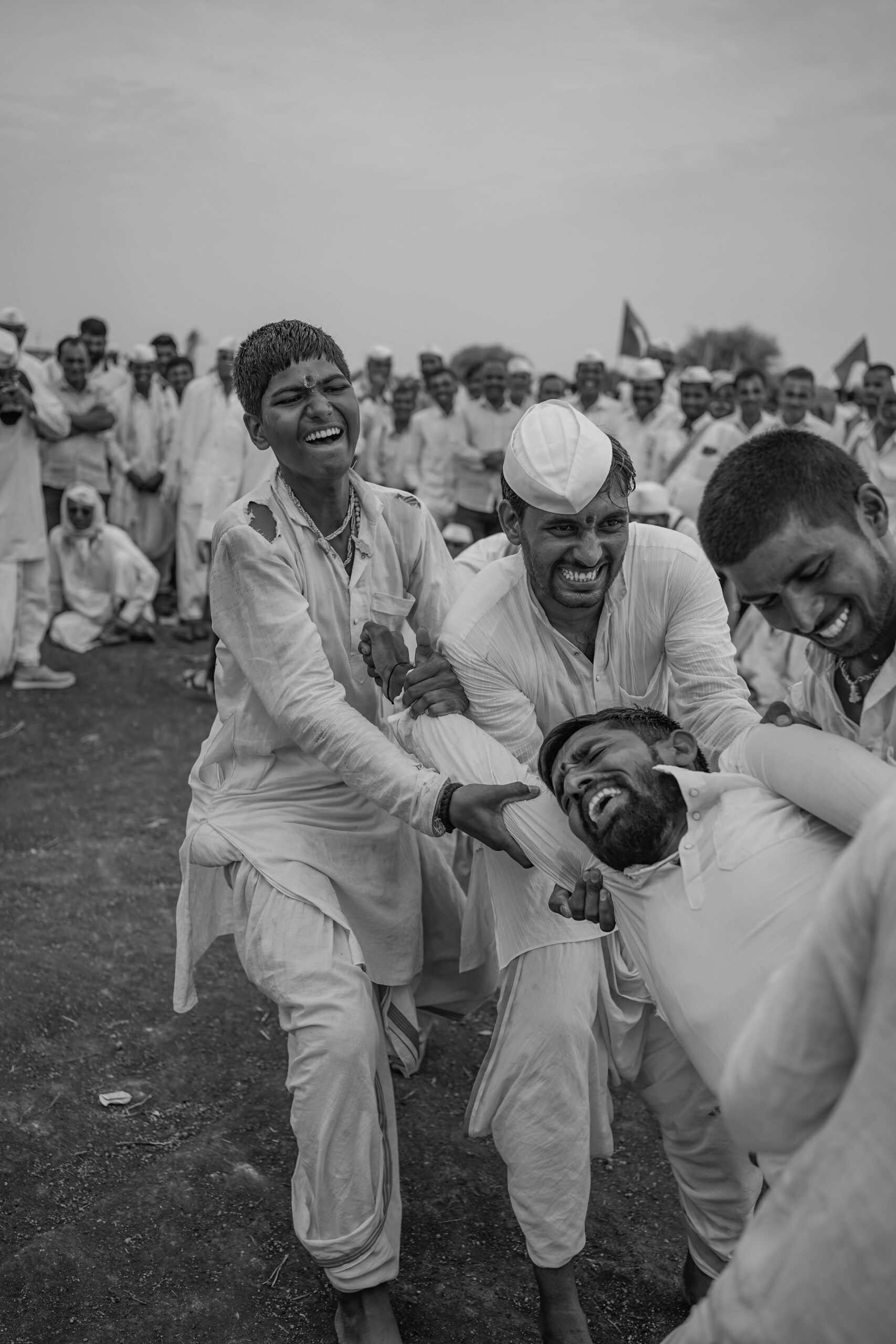
One of the key advantages of black and white photography is its ability to convey a sense of intimacy and immediacy. By removing the distractions of colour, the viewer is drawn into the image, forced to focus on the subject’s expression, posture, and surroundings. In the context of Indian festivals, this can be particularly effective in capturing the quiet moments—a young girl’s reverent gaze as she prays to the goddess, an elderly man’s tears of joy as he watches his grandchildren celebrate Holi, or a couple’s tender exchange as they participate in a traditional wedding ritual.
Highlighting Social and Cultural Narratives
Indian festivals are not just emotional experiences; they are also deeply rooted in the country’s social and cultural fabric. Black and white photography can be used to highlight these underlying narratives, revealing the complex dynamics that shape these celebrations. For instance, a photograph of a group of women performing a traditional dance during a Navratri celebration can convey the sense of community and solidarity that defines these events, while an image of a young boy watching a Ram Lila performance can capture the passing down of cultural traditions from one generation to the next.
The Technical Challenges
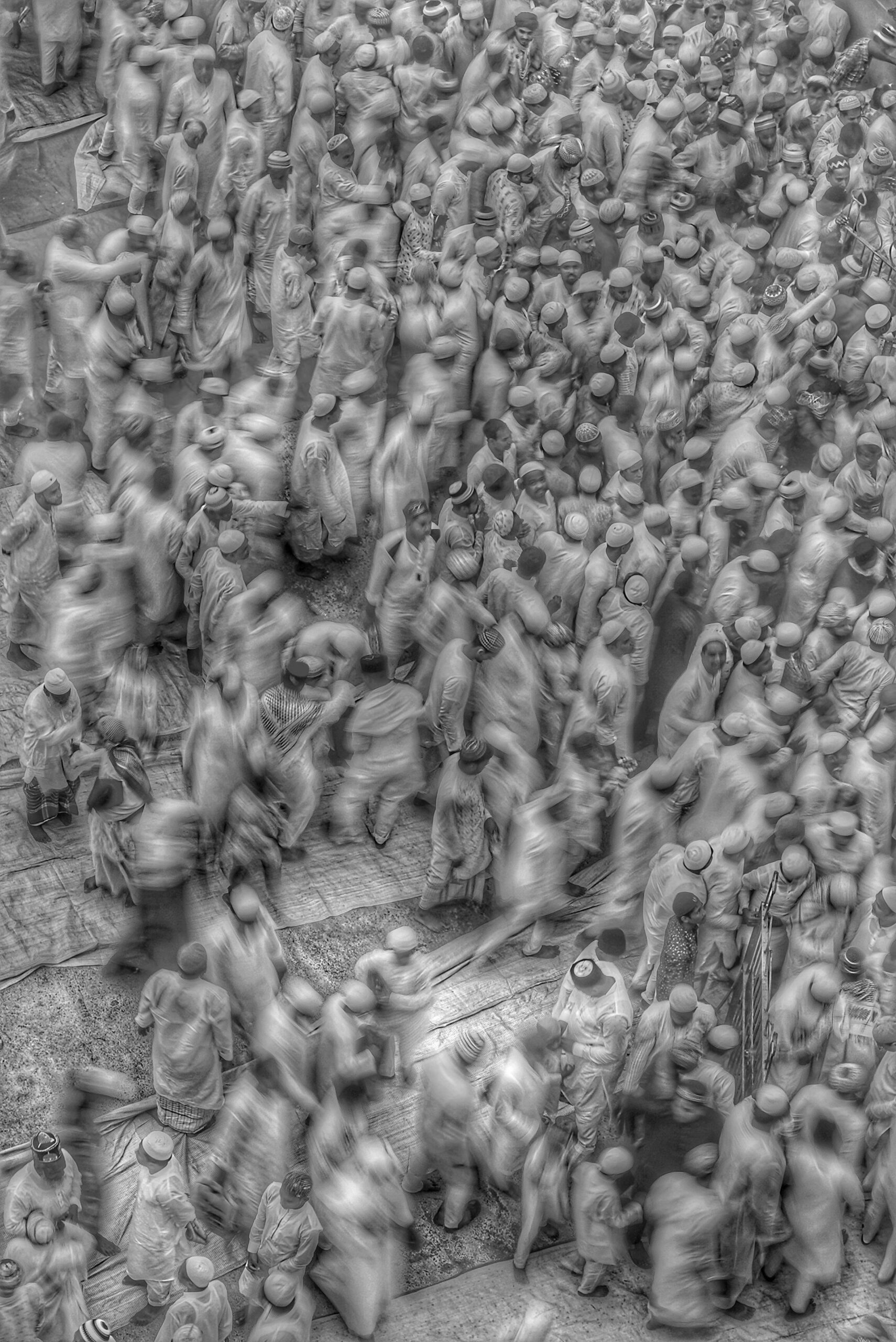
While black and white photography can be a powerful tool for capturing the emotional essence of Indian festivals, it is not without its technical challenges. In particular, the high-contrast lighting that often characterises these events can be difficult to manage, requiring the photographer to be skilled in capturing a wide dynamic range. Additionally, the fast-paced nature of these celebrations demands a high degree of technical proficiency, as the photographer must be able to work quickly and decisively to capture the fleeting moments that define these events.
You NEED to know your gear through-and-through. Run through some scenarios beforehand because moments happen on the field in a split second which might not happen again. Or if your intent is to shoot in a photojournalistic style, then that particular moment is gone, and can’t be recreated. Carry a flash on your camera and keep it off because there are situations where you might need to use it as a fill, and reaching out for it during the moment means it’ll be gone before you’re ready to shoot.
Tips To Shoot
Focus on capturing raw emotions rather than just the grandeur of the event. The viewer’s eye is drawn to expressions, gestures, and contrasts, so pay attention to faces in prayer, laughter, or deep concentration. Frame your shots around storytelling moments—a wrinkled hand holding Diyas, children’s wide-eyed wonder during processions, or the solemnity of devotees in crowded temples. Here are a few tips:
Composition Tips
- Get close and frame tight on faces, hands, or eyes—details reveal emotion more powerfully in B&W.
- Use leading lines from Rangolis, temple architecture, or procession paths to guide attention toward subjects.
- Look for layering—foreground silhouettes, middle-ground action, and background context—to give depth.
- Negative space (like smoke, sky, or plain walls) can isolate emotion-filled subjects effectively.
Technique Tips
- Shoot in Monochrome profile (or simulation) but shoot RAW alongside JPEG. This gives you full control over tonal adjustments in post, while giving you a taste of the final product.
- Use spot metering on faces to preserve emotional highlights without being distracted by bright decorations. The most important detail you want to see is the locus of the story you want to tell.
- Leverage shadows and high-contrast light to create drama, don’t shy away from underexposing slightly. This also helps preserve details in the highlights while increasing dynamic range.
- Work with wider apertures (f/1.8–f/2.8) to blur distractions in chaotic festival environments. But don’t shy away from using deep depth of field (f/4-f/8) and use deep, layered compositions to describe more of the scene.
- Anticipate emotion. Observe rhythms of rituals or processions so you’re ready when moments happen.
- Switch to continuous low burst mode and turn on pre-capture, because perhaps your timing of pressing the button might not be right, but you’ll still preserve the moment.
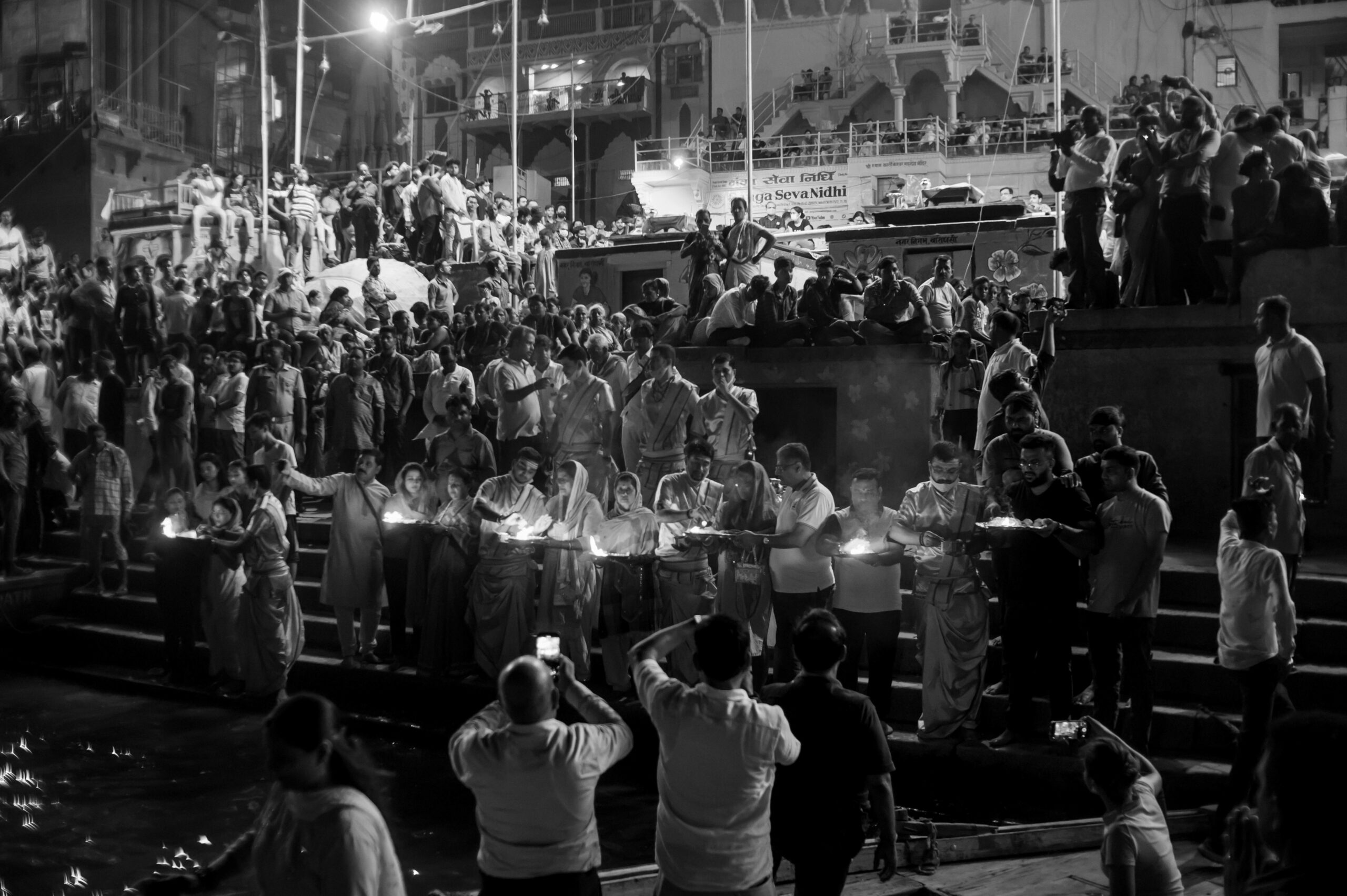
Gear Tips
- A fast prime lens (35mm or 50mm f/1.4) is excellent for intimate, emotion-driven shots. The 35 especially gives you ample opportunity to capture emotions and depth while also preserving the background without distortion from wide-angle lenses.
- A zoom (24-70mm/24-105mm) helps adapt quickly in crowded festival settings without losing the moment.
- If shooting handheld in low light, a camera/lens with good stabilisation will help avoid motion blur. Combine this with faster lenses for tack sharp shots.
- Consider using smaller camera setups. You might not get enough space, so big bodies and long lenses won’t be the best choice to shoot, especially in tight spaces.
- A circular polariser can sometimes help control reflections and enhance textures, useful even for B&W conversions. Better to have it and not want it vs want it and not have it.
What’s Next?
Indian festivals are a riot of colours, sounds, and emotions that can be both exhilarating and overwhelming, easily overwhelming your senses. However, by using black and white photography, it is possible to strip away the distractions of colour and tap into the raw emotions that underlie these joyous occasions. Whether it’s capturing the intimacy of a quiet moment, highlighting the social and cultural narratives that shape these celebrations, or simply conveying the unbridled joy of a festive occasion, black and white photography offers a powerful tool for storytelling, one that can reveal the deeper, more poignant truths that lie beneath the surface of these vibrant events. As we continue to navigate the complexities of Indian culture and society, the use of black and white photography to highlight emotion in Indian festivals offers a unique perspective, one that can help us connect with the very heart of these celebrations.

